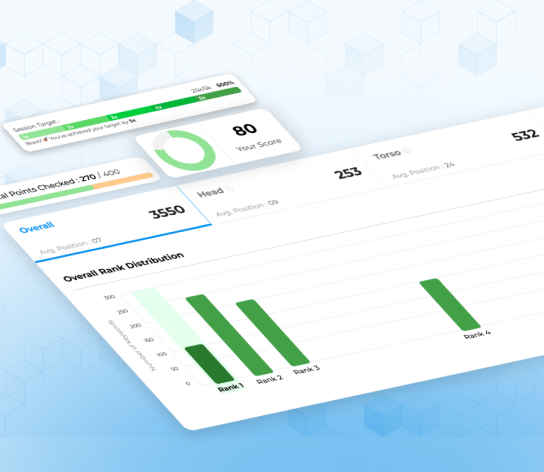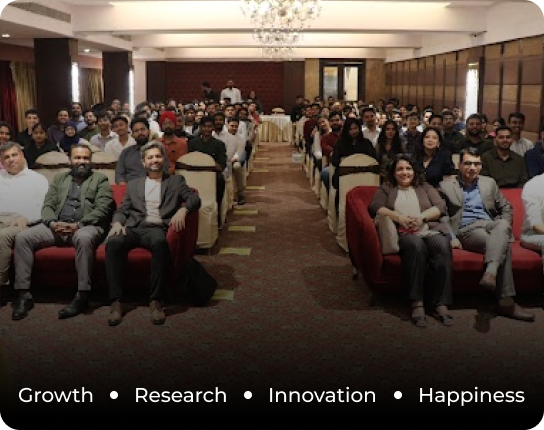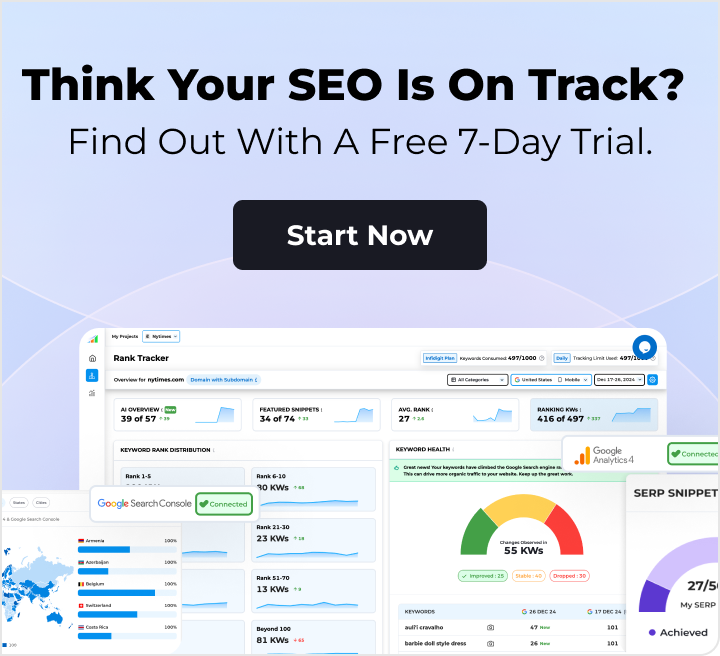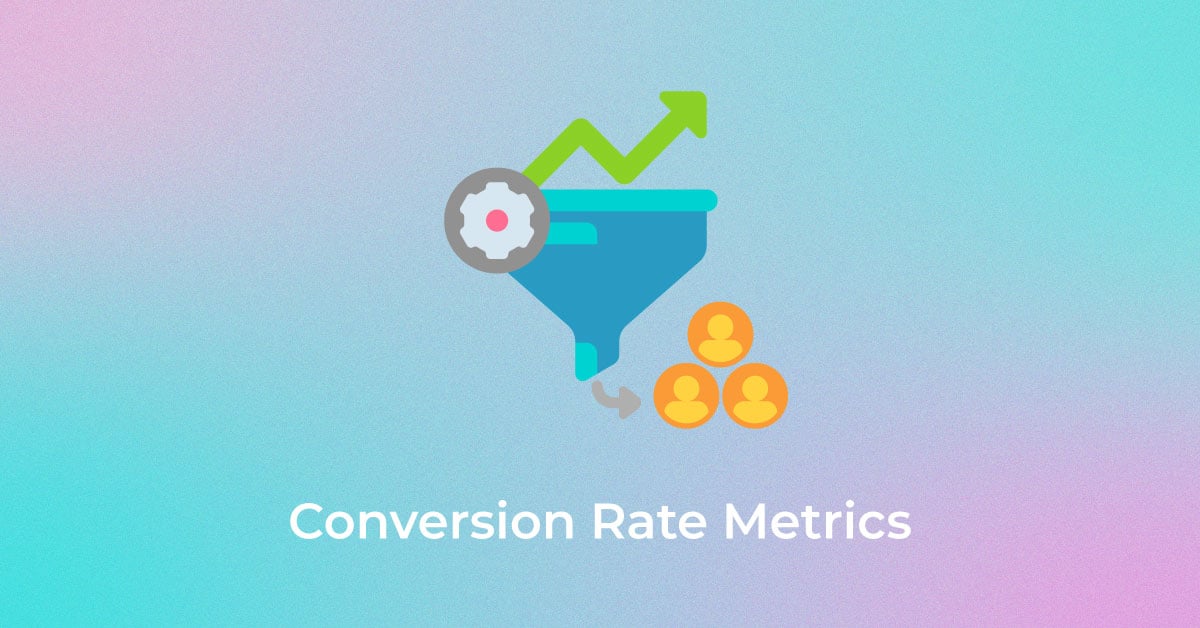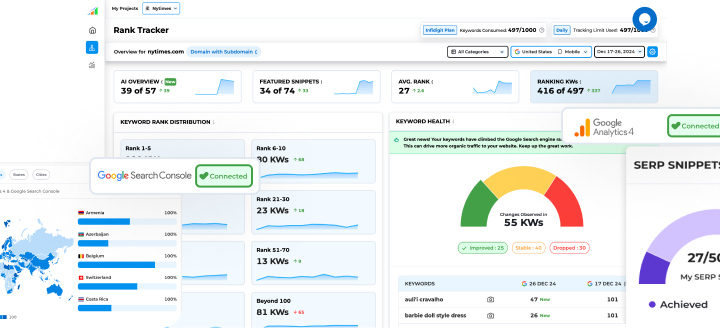Introduction to Ecommerce CRO
Understanding the Importance of Conversion Rate Optimization
For any ecommerce business aiming for success, understanding the significance of Conversion Rate Optimization (CRO) is foundational. It’s a process that helps you understand user behavior and tweak your website for optimization to encourage more purchases. By leveraging conversion rate optimization services, you can implement strategies that drive measurable results and maximize ROI. Given that a high percentage of personalization efforts lead to a noteworthy increase in ROI, it’s evident that optimizing for conversions isn’t just beneficial; it’s essential. One might even consider it a potent leverage to surpass competitors in the market.
The Business Impact of Improved Conversion Rates
Conversion rate optimization has a transformative impact on your business. As conversions climb, every visit carries more value, directly increasing your sales and revenue. It’s a ripple effect—superior conversion rates often result in elevated customer lifetime value, fostering enhanced customer loyalty. This positive shift affects not only the bottom line but also streamlines marketing costs, bolstering overall business health and sustainability. In essence, optimizing for better conversion rates through conversion rate optimization isn’t merely a tactic; it’s a strategic move towards a more profitable and customer-centric business model.
Analyzing Your Current Ecommerce Performance
Key Metrics to Measure Before Applying CRO Strategies
Before diving into CRO strategies, it is crucial to get a baseline of your current performance. Some key metrics to measure include your conversion rate, average order value (AOV), customer acquisition cost (CAC), customer lifetime value (CLV), bounce rate, and cart abandonment rate. These metrics supply invaluable insights, allowing you to pinpoint where your ecommerce store stands and to identify which areas offer the most significant opportunity for improvement. Tracking them will also help in setting realistic targets for your CRO initiatives.
Tools and Methods for In-Depth Ecommerce Analysis
When it comes to in-depth ecommerce analysis, several tools and methods stand out for their efficacy. Free software such as Google Analytics provides comprehensive insights into user behavior. For Shopify users, applications like Firepush, Blyp, and Privy can offer tailored advice, particularly for conversion optimization.
Platforms like BigCommerce also offer analytics with a detailed view into aspects like abandoned carts—what products were in the cart and at what stage they were abandoned. Additionally, their In-Store Search analytics reveal customer search terms, which can highlight what customers want that you might not currently offer.
To not just diagnose but also improve conversion issues, scheduling sessions with platform experts for dedicated conversion rate coaching can be quite beneficial. Overall, these tools and methods are not just about understanding metrics but translating them into actionable strategies to optimize conversion rate and improve it.
Google Analytics
Google Analytics is a powerful tool for tracking and analyzing website traffic and user behavior. It allows you to see how visitors interact with your site, tracking metrics like session duration, pages per session, bounce rate, and the paths users take through your site. To start using Google Analytics, you’ll need to set up a Google Analytics account and install the tracking code on your website.
Once the code is installed, you can view a wealth of data on your dashboard, from real-time user activity to detailed reports on demographics, acquisition, behavior, and conversions. For ecommerce analysis, you can set up goals to track conversions and use the Ecommerce Analytics section to measure transactions, revenue, and other important metrics related to your online store. Analyzing this data will provide key insights into where you might be losing potential customers and what parts of your website could be optimized for better performance.
BigCommerce Analytics
BigCommerce provides an Analytics section within its platform, offering valuable insights specifically catered to ecommerce. The abandoned cart data lets you see which products were in the carts that weren’t purchased, a first step in understanding where potential sales are dropping off . To leverage this feature, log into your BigCommerce admin panel and navigate to the Analytics section. From there, you can explore the different dashboards, including the Abandoned Cart report.
This report not only highlights lost opportunities but could also suggest issues with pricing, user experience, or unexpected checkout complications. Additionally, use the In-Store Search analytics to see what your customers are searching for and identify any mismatches between your site’s content and user expectations. These insights help you fine-tune your inventory and on-site SEO tactics to better match customer intent.
BigCommerce users can further enhance their knowledge by accessing conversion rate coaching through BigCommerce University, which offers scheduled sessions to dive deeper into maximizing their ecommerce potential.
Optimizing User Experience for More Conversions
Streamlining Navigation and Checkout Processes
Streamlining navigation and checkout processes are critical steps in optimizing user experience for conversions. Simplify your website’s navigation menu to make it easier for customers to find what they’re looking for. A clean and intuitive journey from landing page to checkout significantly reduces the chances of cart abandonment, ensuring a smooth optimization funnel for the users.
When it comes to the website checkout process, complexity is the enemy. Remove any unnecessary fields that could discourage a potential buyer and offer guest checkout options. Customers appreciate a straightforward, hassle-free experience, which involves a noticeable progress indicator, minimal steps, and a clear, simple path to purchase. Not only does this create a positive user experience, but it also encourages repeat business and positive word-of-mouth.
Improving Site Speed and Mobile Responsiveness
To boost conversions, your ecommerce site needs to perform like a well-oiled machine, especially considering that sluggish loading times are a top conversion killer. Begin by evaluating and optimizing site speed—every second counts. Tools like Google PageSpeed Insights will provide you with actionable recommendations, including optimizing image compression and leveraging browser caching.
Equally crucial is ensuring that your website is mobile-responsive. Over 60% of online traffic now comes from mobile devices, so it’s vital that your website pages provide an experience on par with desktop. Opt for a responsive website design that shifts smoothly between devices and screen sizes. This seamless adaptability not merely aids in retaining visitors but also contributes to a positive brand impression, vital for conversion rates.
Leveraging Social Proof and Trust Signals
Displaying Customer Reviews and Testimonials
Boost confidence in your products by showcasing customer reviews and testimonials prominently on your product pages. Social proof, such as these authentic endorsements, drives trust, validating the decision to purchase for those on the fence. Display both positive and critical reviews to lend credibility; prospective customers respect transparency.
You can enhance the influence of reviews by integrating real customer photos or video reviews near purchase buttons. Seeing real-life usage and satisfaction can significantly diminish hesitancy and bolster purchase confidence. Consider split-testing the arrangement of reviews to discover the most effective placement for influencing buying decisions.
Using Trust Badges and Secure Payment Icons
It’s crucial to alleviate consumer fears about security, especially at the checkout. A powerful way to do so is by using trust badges and secure payment icons. These visual cues, like the ‘Guaranteed Safe & Secure Checkout’ badge or padlock symbol next to payment fields, can significantly boost buyer confidence.
Similarly, displaying accepted payment methods and certifications from third parties—such as SSL certificates, PCI Compliance seals, or accreditation from the Better Business Bureau (BBB)—subconsciously reassure customers about transaction security. Ecommerce studies show these badges impact the perception of trust and can be a determining factor at the crucial point of sale.
Personalizing the Shopping Experience
Implementing Product Recommendations and Personalized Content
Implementing product recommendations and personalized content is like providing a bespoke shopping experience for each visitor, much like an attentive store clerk would. Set up a product recommendation engine that correlates a customer’s browsing behavior and purchasing history to display items they might find attractive. Personalized content, such as tailored product selections and insightful, custom-written blog posts or buying guides, can enhance engagement and drive sales.
These personal touches foster a sense of individualized service, creating a more compelling and relevant user experience. Amazon is an industry leader in this domain, seeing significant success with its recommendation algorithms. Remember, personalized recommendations are more likely to be acted upon, thus boosting your conversion rates.
Engaging Customers through Targeted Promotions and Email Campaigns
Engaging customers goes beyond the reach of your website. Through targeted promotions and email campaigns, you can connect with your audience in a more direct and personal way. Segment your email list to send personalized promotions such as discounts or early access to new products to certain customer groups, like frequent buyers or those who have shown interest but haven’t made a purchase.
Automating email campaigns can help maintain this engagement without constant manual effort. Critical emails, like abandoned cart reminders and post-purchase follow-ups, not only encourage customers to complete their purchases but also build loyalty and a positive post-sale relationship. For example, the menswear company Huckberry utilizes abandoned cart emails with a personal touch, which not only prompts customers to complete a purchase but also strengthens brand affection.
Enhancing Product Pages for Higher Engagement
Crafting Compelling Product Descriptions and Images
When crafting product descriptions, focus on the narrative that speaks to solving your customers’ problems or fulfilling their desires. Use evocative language that depicts the benefits and lifestyle fit with precision and appeal. It’s not just about listing features; it’s about painting a picture of the product enriching the customer’s life.
High-quality images are just as crucial. They should be clear, professionally shot, and provide a visual story of the product. Include multiple angles and close-up shots to allow for detailed inspection, just as if customers were examining the product in a store. Lifestyle images that demonstrate the product in use can further help customers envision the product as part of their lives.
Adding Videos and Detailed Specifications to Boost Confidence
To truly set your product pages apart and instill confidence in potential buyers, integrate videos and detailed specifications. Product videos give a dynamic representation of your items in use, highlighting features and benefits in a way static images simply can’t. They can be the clincher in the decision-making process by offering that extra layer of familiarity and trust.
Don’t skimp on the specifications either; the more detail, the better. Including measurements, materials used, care instructions, and tech specs can preempt any questions or doubts. Detailed specifications demonstrate transparency and understanding of customer concerns, leading to a more confident, and therefore more likely, purchase decision.
Tapping into Psychological Triggers
Creating Urgency with Limited-Time Offers and Countdown Timers
Creating a sense of urgency can be the nudge that customers need to convert, and limited-time offers are a proven method to do so. By communicating that a deal won’t last forever, customers are more likely to take action rather than risk missing out. Combine this with countdown timers on your website, which serve as a visual and timely reminder of the impending end of a promotion, compelling customers to make a quicker decision.
Strategically placing these timers on both homepages and individual product pages on your website can effectively drive conversions and encourage users to click. Ensure that your messaging around these offers is clear and consistent across all channels to maximize their impact. Remember, the goal is to create a sense of urgency, not panic, so keeping the tone encouraging rather than pressuring is key.
Utilizing Scarcity and Exclusivity to Spur Action
Scarcity and exclusivity are powerful motivators in consumer psychology. They make a product appear more desirable due to limited availability. Employ tactics like showcasing limited stock with tags such as “Only 2 left in stock!” or offering exclusive products that are available only for a select number of customers or time frame. This strategy plays to the customer’s fear of missing out (FOMO) and can swiftly turn a contemplative shopper into a decisive buyer.
However, use scarcity with integrity; artificial scarcity can backfire if customers sense a ploy. When applied judiciously to genuinely limited or unique items, it conveys value and urgency, entices the hesitant buyer, and can be highly effective in increasing conversions.
Addressing Cart Abandonment Effectively
Utilizing Exit-Intent Pop-Ups and Real-Time Messaging
Implementing exit-intent pop-ups and real-time messaging can be a game-changer when addressing cart abandonment. Use exit-intent technology to track when a customer is about to leave your site and prompt them with an enticing offer or message. This might include a discount, free shipping, or a reminder of an item left in the cart.
Real-time messaging can likewise provide instant assistance or offers based on customer behavior. For instance, if a shopper spends a significant amount of time on a particular product page, a chat prompt offering additional information or a special discount for that item can make all the difference.
These strategies provide a last opportunity to engage customers in the conversion funnel and can lift your overall conversion rate significantly. Do test different offers to determine which resonates best with your audience and remember to keep the messaging consistent with your brand voice.
Following Up with Abandoned Cart Emails to Recover Sales
To recuperate lost sales from abandoned carts, a well-structured abandoned cart email campaign is vital. These emails should be timed appropriately, with the first follow-up occurring within hours of the cart being left. The content of such emails should remind the shopper what they’re missing out on—think images and descriptions of the abandoned items—and possibly offer an incentive to complete the purchase, such as a discount or free shipping.
Personalization can amplify the effectiveness of these emails. By mentioning the shopper’s name and referencing their specific abandoned items, you establish a connection that generic emails lack. Including customer testimonials or reviews for the abandoned items might also sway the decision-making process to your favor. Keep sequences to a thoughtful minimum to engage rather than irritate.
A/B Testing for Data-Driven Decisions
Setting Up and Running Reliable A/B Tests
Setting up and running reliable A/B tests is critical to making data-driven decisions that enhance your ecommerce conversion rates. The key to a successful A/B test is to modify one element at a time—be it the color of a call-to-action button, the phrasing of a headline, or the position of customer reviews—and assess the performance against the original.
Utilize an A/B testing platform to run these comparisons in real time, serving different versions to equal portions of your visitors. Keep your tests running until you gather sufficient data to draw a meaningful conclusion about which version performs better, and helps to optimize results. It’s essential to track the right metrics for each test, typically focusing on conversion goals like completed purchases or sign-ups. Remember, patience and precision are your allies here to optimize effectively.
Iterating and Evolving Your Ecommerce CRO Approach
Iterating and evolving your ecommerce CRO approach is a continuous process. Just because a strategy works now doesn’t mean it will remain effective in the future. Stay nimble by routinely reviewing the performance data from your A/B testing and analytics. Use these insights to refine your tactics and try new variations based on emerging trends or customer feedback.
Moreover, adapt your approach to the growth of your business. As your ecommerce store expands, you may want to introduce more advanced personalization, implement machine learning algorithms for product recommendations, or use website heatmaps for deeper user experience insights. Always be ready to evolve your CRO strategies to align with the changing dynamics of the market and customer expectations.
How to Increase Conversion Rate in Ecommerce
Regularly Reviewing and Optimizing Conversion Paths
Regular review and optimization of your conversion paths are essential for maintaining an effective ecommerce CRO strategy. Analyze the user journey from the landing page to checkout periodically to identify friction points or opportunities to optimize. Look for patterns in exit pages and feedback from user testing to guide optimizations.
Consider also the less quantifiable elements, like the emotional journey of your customer on your website. Is their shopping experience enjoyable and engaging, or is it causing frustration? Be proactive in addressing any issues and be prepared to tweak even the smallest elements, like button sizes or font readability, which can have a surprising impact on overall conversion rates.
Staying Updated with Ecommerce CRO Best Practices
To stay at the forefront of ecommerce success, it’s imperative to keep abreast of the latest CRO best practices. The landscape of online shopping is rapidly evolving, and what was effective last year may not hold the same potency today. Subscribe to industry newsletters, attend webinars, and follow thought leaders in the space to stay informed about the latest trends and case studies.
Furthermore, engage with a community of ecommerce professionals. Peer discussion forums and professional networks can be a goldmine for practical insights and novel ideas. Finally, don’t hesitate to experiment with new tools and technologies as they emerge. Staying updated isn’t just about knowledge; it’s about being agile and responsive in applying that knowledge effectively.
FAQs About Ecommerce Conversion Rate Optimization
What is a Good Ecommerce Conversion Rate?
A good ecommerce conversion rate is generally seen as one around 3%, falling within the average range of 2% to 3%. This conversion rate places you at or above the industry norm. However, it’s important to remember that rates vary across different niches and product types. For example, luxury goods usually have lower rates due to higher prices, while essentials might see higher trends. The top 20% of Shopify sites boast rates above 3.3%, so striving beyond the average is advisable for greater success.
How do You Calculate Your Ecommerce Site’s Conversion Rate?
To calculate your ecommerce site’s conversion rate, divide the number of purchases within a given period by the total number of visitors to your site in the same timeframe. Multiply the result by 100 to get a percentage. For instance, if you had 50 sales and 2000 site visitors last month, your conversion rate would be (50/2000) x 100, equating to a 2.5% conversion rate. Track this conversion rate metric regularly to monitor your site’s performance and identify areas for improvement.
What is CRO in ecommerce?
CRO in ecommerce is the methodology of enhancing an online store to increase the percentage of visitors who make a purchase. It involves optimizing website elements such as product descriptions, page load speeds, and checkout processes through data analysis, user experience research, and continuous testing. The goal of CRO is to improve user engagement and satisfaction, leading to increased sales and a higher return on investment (ROI).
Popular Searches
How useful was this post?
0 / 5. 0


